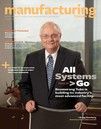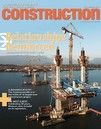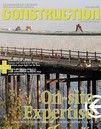Guidelines For Effective Meetings
 Time is money! Learn how to communicate more effectively.
Time is money! Learn how to communicate more effectively.
Communication will always be an important responsibility of business owners as they spend significant potions of their time interacting with employees. Meetings are usually a necessary means of communication; however, business owners must keep in mind that time is a limited resource for them and their employees. Since time is money, business owners must improve their usage of time, especially during an economic downturn. Before scheduling a meeting, be certain it is necessary by asking the following questions:
- Could the necessary information be communicated via e-mail, telephone conversation, conference call or memo?
- Could the number of participants be reduced?
- Could the meeting be shortened?
If the meeting proves to be necessary, the individual planning it must set clear objectives, roles and guidelines for the participants.
Preparation
Maintain a clear objective. Establish written objectives for your meetings and communicate them to attendees in advance. Discussing and agreeing on meeting objectives in advance will help the entire group remain focused and on track.
Always use an agenda. Agendas help to manage time, maintain focus and reduce the likelihood of “hidden agendas.” Assign a reasonable amount of time for each item on the agenda. More importantly, always strive to conclude the meeting on time.
Ask others to prepare. If information is provided in advance, participants will typically come prepared to contribute. Circulate the objectives, agenda and any homework in advance. Inform attendees they will be asked to actively participate. The goal is to get people thinking about the meeting’s objectives prior to the meeting.
Practice conference room courtesy. If necessary, reserve the meeting room or location in advance, and cancel the reservation if plans change.
Role establishment
The meeting leader organizes the meeting, schedules the time and location, confirms attendance, encourages diversity of opinion, promotes problem solving, manages conflict and commends and supports the contributions of all participants. The meeting leader usually assigns the following roles.
The facilitator, or “air traffic controller,” should concentrate on the meeting process, not the content. The role of the facilitator is not to actively participate in the discussion, but to provide an objective ear regarding the pace, tone and flow of the meeting. If the meeting strays from the agenda, the facilitator alerts the meeting leader. This allows the meeting leader and attendees to focus solely on the discussion and not worry about the management of the agenda.
The recorder, or secretary, is responsible for writing a summary of the meeting. This alleviates participants from having to take notes. As such, participants are free to listen and contribute. A flip chart is an effective vehicle for posting notes during the meeting as it keeps the group focused, helps participants avoid repetition and later serves as a permanent record of proceedings.
Subject matter experts should be present to provide background information and serve as a resource for the group. In an effort to accommodate the experts’ time, they should only be scheduled to join the meeting for the appropriate portion of the agenda.
One meeting participant can take on more than one of the aforementioned roles; however, the role of facilitator should only be taken on by one individual as he or she must be free to concentrate solely on the meeting’s process.
Guidelines for meeting leaders
It is important for meeting leaders to learn and use the guidelines for effective meetings. However, meeting leaders also have other responsibilities.
Value everyone’s time. Begin the meeting at the scheduled time and conclude at the time indicated on the agenda (or earlier, if possible). Generally, you should not delay a meeting due to late arrivals. In addition, you should not recap for late arrivals. Instead, request that these individuals catch up after the meeting’s conclusion.
Stay on track. Open the meeting by restating the meeting’s objective and reviewing the agenda.
Prepare thought starters. An effective way for meeting leaders to jumpstart creative sessions is to create a draft of potential ideas. This serves as a thought provoker and conversation starter, and also speeds the brainstorming process by providing a point of departure for items on the agenda.
Keep the discussion moving. Do not allow one person to dominate the discussion. Ask open-ended questions such as, “What do you think about that?” and paraphrase responses by saying, “In other words, you’re saying…”
Discourage disruptions. With the exception of emergencies, do not allow phone calls or interruptions. Designate an individual not in attendance (such as the company’s receptionist) to allow only specified interruptions.
Let creative juices flow. If you and your staff members are in the middle of a productive discussion or important problem solving session, do not interrupt it simply to satisfy an arbitrary agenda. If the meeting strays from the initial agenda, interaction between the facilitator and meeting leader becomes key. The facilitator may inform the meeting leader that the meeting has wavered from the agenda; however, the meeting leader retains the authority to allow the productive discussion or problem solving to continue if he or she deems it significant. Creative juices sometimes create issues that must be addressed at another time. These issues are commonly known as “parking lot issues.” Parking lot issues are discussed in the follow-up portion of the meeting described below.
Follow up and follow through. The success or “return on investment” of the meeting will almost always be determined by the processes, procedures, etc. implemented or improved as a result of the meeting. Issues requiring attention must be addressed by the conclusion of the meeting in order to resolve unanswered questions and do the following:
- Confirm the recipient of each responsibility assigned or delegated.
- Confirm completion deadlines for each responsibility.
- Determine how parking lot issues (those topics that arose during the meeting that were not part of the agenda) should be handled.
- Plan the next meeting’s preliminary agenda, objectives, roles, etc., if appropriate.
- Review the overall meeting. Discuss what worked and what should be changed for the next meeting.
- Ensure the recorder has captured key points and follow-up items (including the names of those responsible for certain projects and the deadlines of those tasks) in a meeting summary.
Guidelines for meeting participants
Meeting participants can use the following tips to help stimulate meeting participation and overall involvement.
Do your homework. Review the agenda and jot down thoughts and questions in advance. Also, prepare your portion of the Agenda/Action Plan.
Be on time. If you do not arrive to the meeting on time, do not ask or expect the group to recap for your benefit. Instead, get the necessary information from the recorder during a break or at the conclusion of the meeting.
Bring an open mind. The purpose of a meeting is to generate and exchange ideas, not to defend the status quo. Come preprepared to hear new ideas and, more importantly, contribute some of your own.
Be an active listener. Pay attention to comments from all participants, participate when appropriate and rely on the recorder for notes.
Use group time for group issues. Do not use group meeting time to discuss issues or details affecting only a few members of the group. Domineering members should avoid monopolizing the group’s time for their personal agendas.
Additional meeting ground rules
The following additional rules should be utilized by everyone in attendance.
Strive for the win-win situation. Focus competitive energy on solving issues and beating the competition, not each other. The group will create better ideas and solutions if everyone works collaboratively and cooperatively. Take advantage of the group’s diversity, approaches and experiences.
Create holding patterns when necessary. Only one person should have the floor at any given time. Those with questions or something further to add enter into a “holding pattern.” This provides everyone with the opportunity to have their thoughts heard, and allows the group to fully concentrate on the current dialogue.
Capture thoughts on paper. If you find yourself in a holding pattern, write down any questions or thoughts so you can remain involved in the current dialogue without forgetting what you want to say.
Steer clear of heat seeking missiles. Avoid the natural tendency to react defensively to new ideas and shoot them down. Ideas should be evaluated based on their merits, not their drawbacks
Avoid distractions. Stick to the agenda. Limit side conversations, phone calls and casual stories. Defer non-agenda items (or issues not urgent or pertinent) to a parking lot for post-meeting discussion.
Explain your point. When making a presentation to the group of attendees, inform them of the point you want to make. Then take time to establish your point and explain your logic.
Clarify and paraphrase. Everyone should be allowed to completely clarify the point(s) they want considered. One way to accomplish this is to have the meeting leader (or another participant) paraphrase the point being made to ensure comprehension.
Encourage “baby” ideas. During creative sessions, new and innovative ideas should be encouraged. These ideas, though probably not fully developed, should not be dismissed prematurely. Take baby ideas at face value and work with the positives. If the negatives can be overcome, the positives may provide the breakthrough you are seeking. Baby ideas may be handled in the same manner as parking lot issues.
Conclusion
The primary objective for all meetings should be to maintain productivity and generate a return for the investment in time— and time is money. As such, it is critical for the person calling and/or leading the meeting to have a plan or agenda. The meeting leader should also follow the schedule if possible, and start and end on time. More importantly, all attendees should participate. Finally, a great way for the meeting leader to ensure participation and obtain tangible results is to utilize the Agenda/Action Plan.
Remember, a meeting leader’s keys to a successful meeting are summarized as follows:
- Prepare
- Stay on track
- Encourage participation from everyone
- Start and end on time
- Use the issues discussed and learned to improve the meeting’s results







